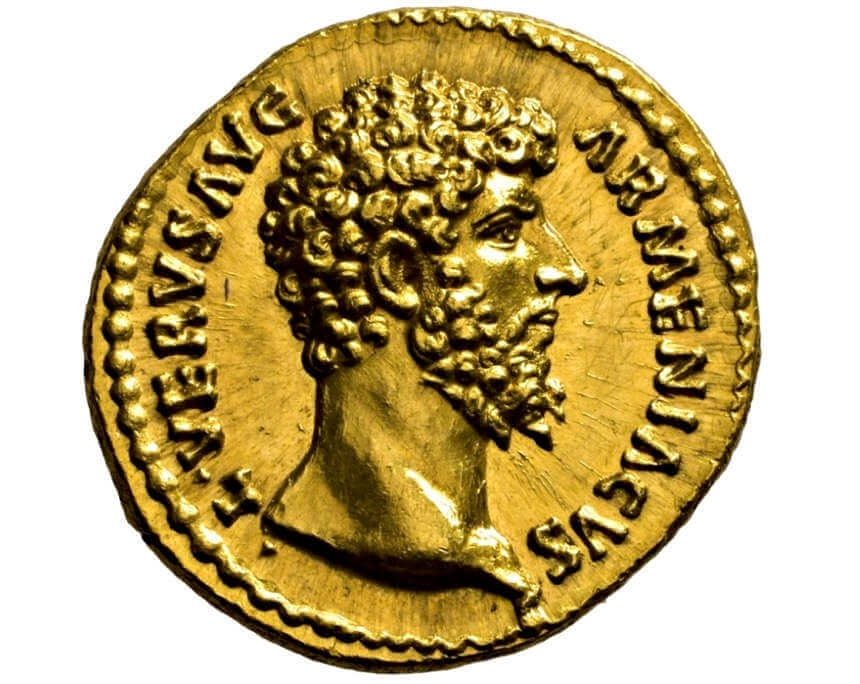Strong Results forAncient and Habsburg Coins in the 434th Peus Auction
Dr. Busso Peus Nachf.
Auction 434
Coins
27-28 April 2023
D-Frankfurt
The Dr. Busso Peus got off to a good start in 2023 with its 434th auction. The two large collections that formed the basic framework of the antiquities lot, “Saarländischer Apotheker” (Greeks) and “Dr. E.” (Romans) were very well bid for. The title piece, a gold stater of Kalchedon (no. 178), came from the first-mentioned collection and was hammered for € 5,000 at an estimate of € 3,000, which is representative of the increase in the overall auction.
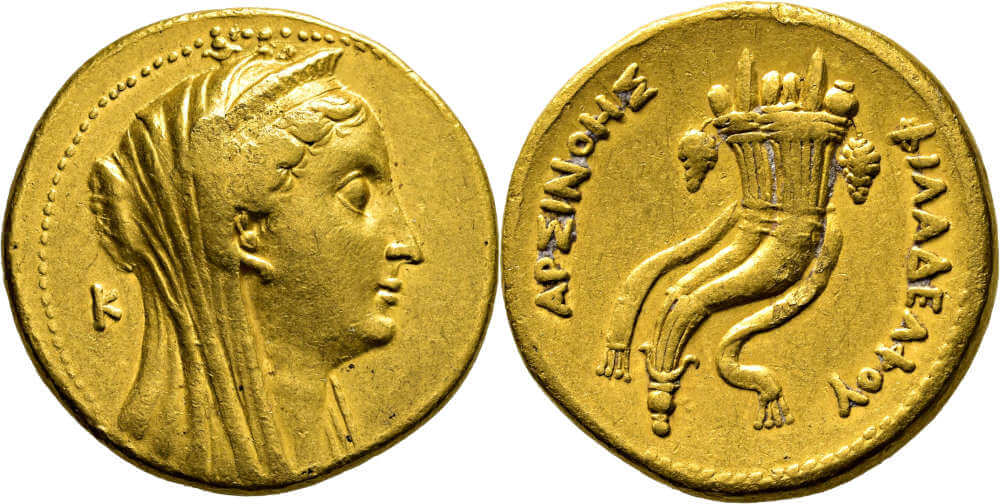
Lot 313: Ptolemaic Kingdom. Ptolemy II Philadelphos (285-246 BC). Gold octodrachm (Mnaeion), 254/252 BC, Alexandria. Scuff marks in the reverse, good Very fine. From the collection of a Saarland pharmacist. Estimate: 6,000 EUR. Hammer price: 10,000 EUR.
The gold pentadrachm of Ptolemy I (no. 312) doubled its price from 5,000 to 10,000 €, and the mnaeion (no. 313) was also hammered at 10,000 € (estimate 6,000 €). The fact that a special focus of our customers is on excellent quality was proven, for example, by the drachm of Kalchedon (no. 176), which is generally commune, but which jumped from € 200 to € 1,200. Among the Roman coins, the aes nominals were particularly in demand. For example, a Dupondius for Livia (no. 420), which had last been auctioned in our house in the Neussel Collection (2017), did not cost € 650 this time, but a whopping € 1,400 (estimate € 200). A sestertius of Caligula (no. 422) even rose from € 250 to € 3,000.
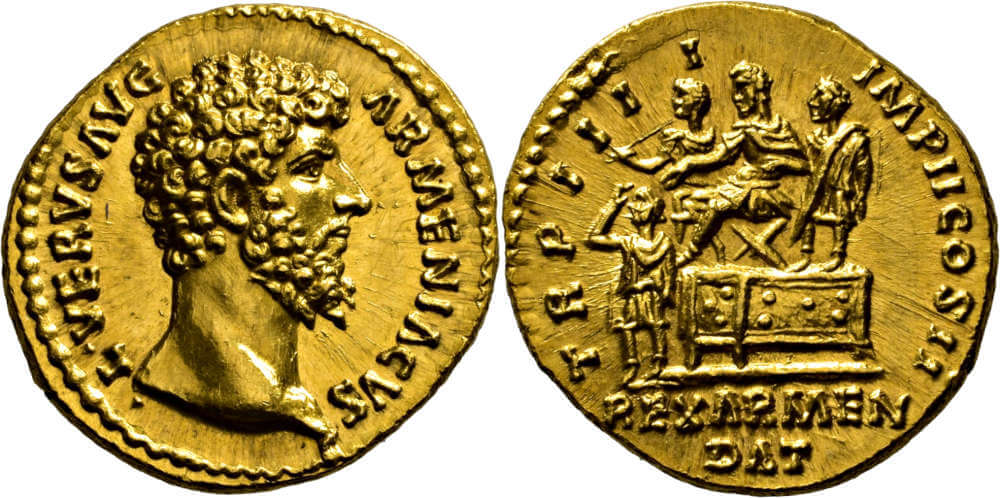
Lot 586: Roman Empire. Lucius Verus (161-169). Aureus 163/164, Rome, on the occupation of Armenia and the installation of a new client king there. Superb example. A few hairline scratches in the obverse, extremely fine uncirculated. From a Private collection completed in 1951. Estimate: 15,000 EUR. Hammer price: 19,000 EUR.
Roman gold also achieved robust prices. One example is the aureus of Lucius Verus (no. 586) on the installation of the Parthian king, which achieved a result of € 19,000 with an estimate of 15,000. Among the silver coins, the excellent pieces again caused bidding wars, for example, an excellent Nerva denarius (no. 511) rose from € 350 to € 1,100. The lots were almost fiercely bid for, with a tenfold increase in the estimated price not uncommon.
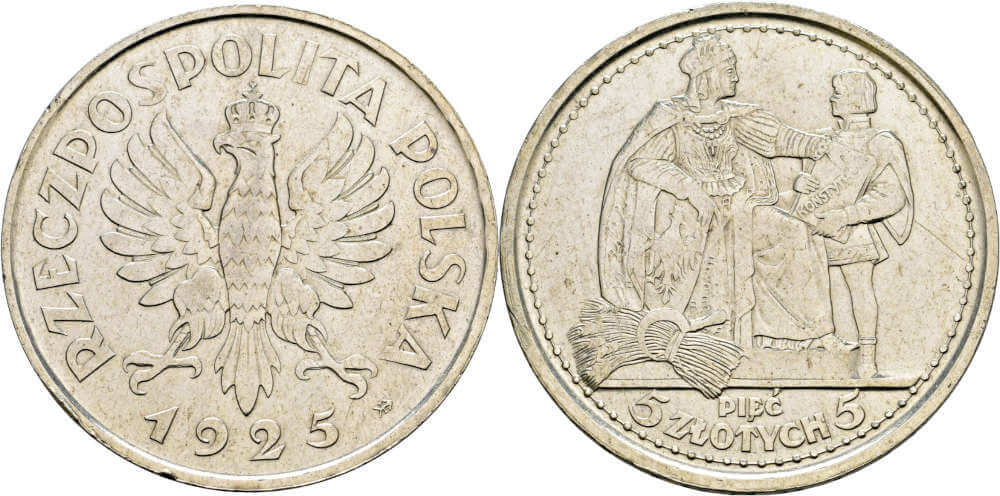
Lot 2079: Poland. 1st Republic (1918-1939). 5 zlotych 1925, constitution, variant with 81 pearls. Very fine. Estimate: 1,500 EUR. Hammer price: 4,200 EUR.
Friday began with the traditionally hotly contested sections of coins of non-German countries and the Habsburg hereditary lands. Here, the Internet participated lively, because many dealers and collectors of foreign countries knew to appreciate the rarities of their homeland and did not shy away from high prices after a long struggle. A few figures should illustrate this. In addition to the many very good results for smaller gold coins, the Polish specimens particularly stood out. The rare 5 Zlotych variety from 1925 (no. 2079) achieved a hammer price of €4,200 at an estimate of €1,500. Another specimen of a 10 zlotych commemorative coin on Romuald Traugutt (no. 2083) fetched €3,600. On the whole, the hammer price exceeded the estimate by 33%.
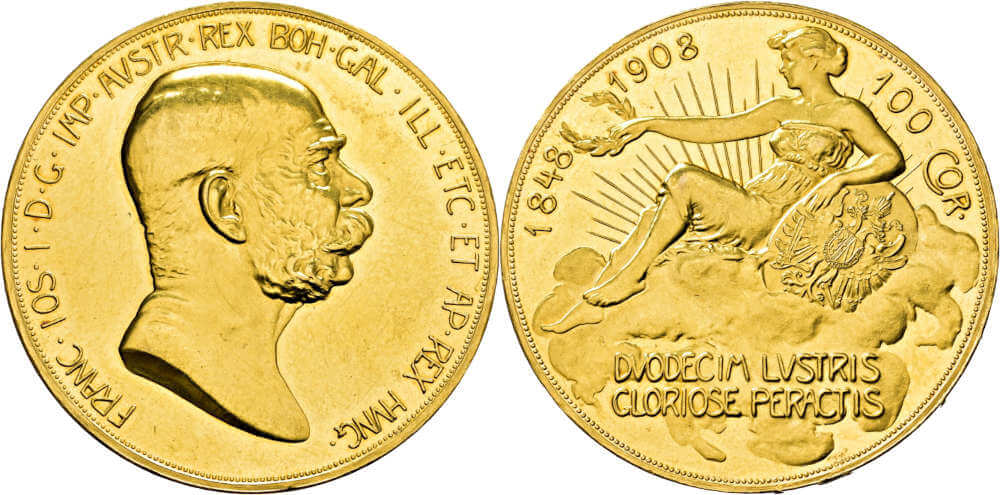
Lot 2251: Habsburg hereditary lands. RDR. Franz Joseph (1848-1916). 100 crowns 1908, Vienna, 60th anniversary of the reign. Small scratches, extremely fine/uncirculated. Estimate: 3,500 EUR. Hammer price: 13,000 EUR.
The interest of the mainly East-Central European numismatists in the more than 140 coins of the Habsburg monarchy was even more pronounced. Here, the estimate was even doubled. As a highlight, a 100 crown commemorative coin 1908 for the 60th anniversary of the reign of Emperor Franz Josef (no. 2251) fetched a proud €13,000. The final series of the morning was the auctioning of two fine, partly complementary, collections from the Imperial castle Friedberg. In addition to the always popular talers, small coins were not spurned here. To highlight individual results here would go beyond the scope of this report. Only this much: the estimate of the 31 individual lots was outbid by 89%. Small coins in lots were also not ignored later. As expected, the pre- and post-1871 German coins auctioned in the afternoon were solidly bid in all areas and again significantly outperformed their overall estimate. The lots for the crowning finale had, as always, been well inspected by the dealers in advance and achieved prices in the hall as well as on the internet that should reconcile every consignor with the traditionally low estimates of Peus Nachf. As in recent times, the power of the Internet was evident throughout the auction, bringing buyers from all over the world to one table in the virtual auction room.
Here you can find all results of the auction.




